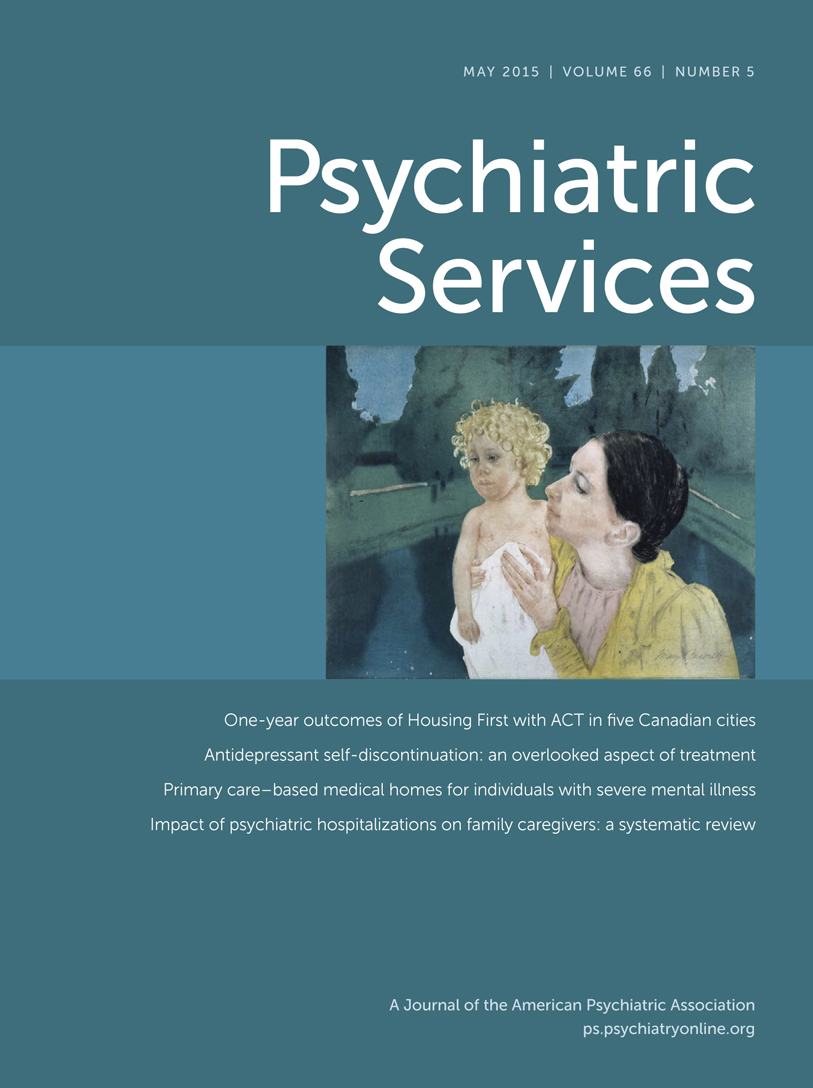This Month’s Highlights
Antidepressant Self-Discontinuation
The lead article this month sheds light on a frequently overlooked aspect of depression treatment—discontinuation of prescribed medications without physician advice or approval. Although guidelines recommend taking antidepressants for several months after symptoms have resolved, studies have shown that many patients stop these medications even before resolution. A better understanding of who is at risk of self-discontinuation can inform treatment improvement interventions. In an analysis of data from three U.S. population surveys, Hillary Samples, M.H.S., and Ramin Mojtabai, M.D., Ph.D., identified 1,411 respondents who had taken an antidepressant in the past year. More than a fifth reported self-discontinuation. The two most common reasons were side effects and experiencing no benefit. The odds of self-discontinuation were higher among respondents with an anxiety or substance use disorder and among those prescribed an antidepressant by a nonpsychiatrist. Odds were lower among older respondents and those with public insurance (page Original article: 455). In a Taking Issue commentary, Mark Olfson, M.D., M.P.H., notes that patients who self-discontinue antidepressants often stop treatment entirely, depriving the physician of an opportunity to learn about factors that contributed to their patients’ decisions. Research on self-discontinuation can help physicians focus on patients at high risk of discontinuation (page Original article: 449).
Housing First in Canada
Housing First is an effective approach to ending chronic homelessness among people with mental illness. It offers rapid access to housing and community support without requiring clients to participate in treatment or demonstrate a period of sobriety. Research in the United States has shown positive outcomes for participants. Now, results from a multisite randomized controlled trial in five Canadian cities provide further evidence of Housing First’s effectiveness. Tim Aubry, M.A., Ph.D., and colleagues report one-year outcomes for a sample of 950 high-need participants with severe mental illness who were either homeless or precariously housed. Half were randomly assigned to Housing First and half to treatment as usual. The Housing First model was enhanced with assertive community treatment. At one year, about three-quarters (73%) of the Housing First participants were stably housed, compared with about one-third (32%) of those in the control group. Housing First participants also scored significantly higher on measures of overall quality of life and community functioning. The authors note that on the basis of these interim findings, the Canadian government has revised its homelessness initiative to emphasize development of Housing First programs in the country’s ten largest cities (page Original article: 463).
Primary Care–Based Medical Homes
Patient-centered medical homes are increasingly being implemented as a model of primary care, and they are strongly supported by provisions in the Affordable Care Act (ACA). Medical homes provide and coordinate care for people with chronic illnesses, including serious mental illnesses, who have complex needs. The North Carolina Medicaid program began phasing in the medical homes model in 1996, and more than 340 practices across the state have successfully incorporated the model. To determine how Medicaid enrollees with severe mental illness fare in North Carolina medical homes, Marisa E. Domino, Ph.D., and colleagues analyzed 2004–2007 data from Medicaid claims for more than 65,000 people with severe mental illness. Using propensity scoring, they created two matched samples—medical home enrollees and nonenrollees. Being enrolled in a medical home was associated with greater use of both primary care and specialty mental health care. Medical home enrollees also had better medication adherence and less use of the emergency department, as well as higher rates of preventive screening for some general medical illnesses. A central aim of the ACA is to improve access to care and reduce the use of more expensive acute services. These findings from North Carolina indicate that the medical home model is an important way to achieve these goals (page Original article: 477).
Briefly Noted
| • | Short inpatient stays may increase caregiver burden. A literature review that examined the impact on caregivers of psychiatric hospitalizations highlights the importance of providing psychoeducation to caregivers about their possible reactions to hospitalization and teaching them coping techniques. Such interventions may improve patient outcomes (page Original article: 527). | ||||
| • | In the Economic Grand Rounds column, an analysis of Medicaid claims data from 35 states showed wide regional variation in use of mental health services among adult Medicaid recipients with mental illness. A better understanding of these variations may improve the effectiveness of Medicaid mental health services (page Original article: 452). | ||||
| • | In a sample of predominantly African-American psychiatric patients on Chicago’s South Side, neurobehavioral disorder associated with prenatal alcohol exposure, a condition estimated to be the single largest preventable cause of intellectual disability, was assessed in 38% of adults and 57% of children (page Original article: 539). | ||||



